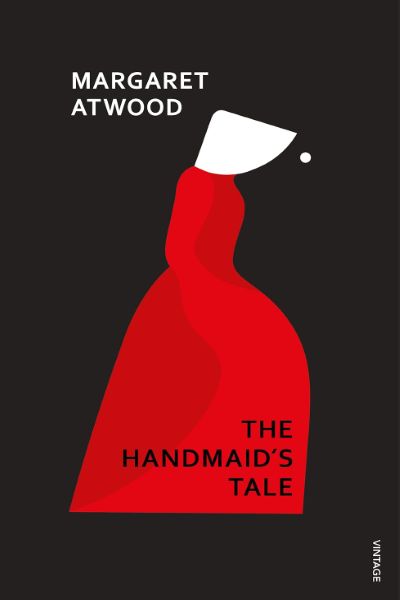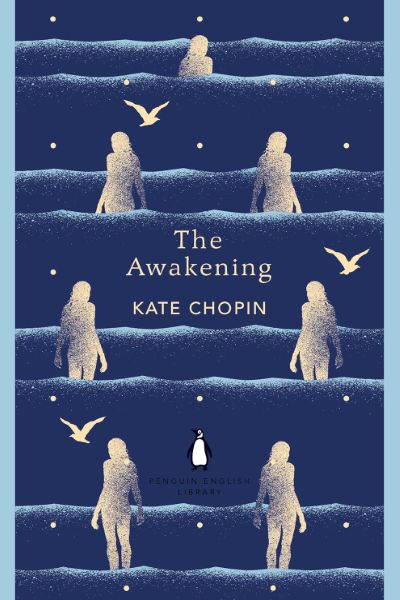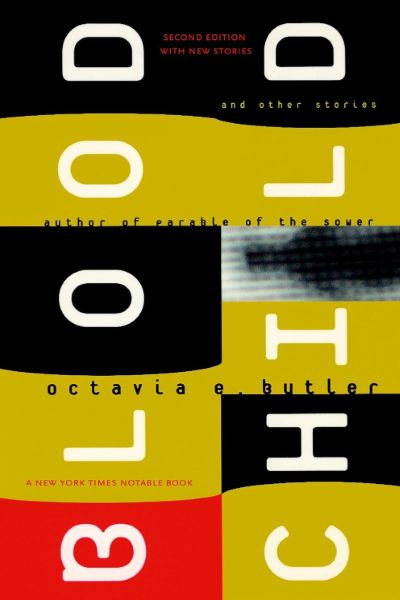The Handmaid's Tale
The Emmy Award-winning television series source material, the gold standard of feminist speculative fiction. The story follows Offred, a fertile woman forced to survive as a member of the servant class in a dystopian near-future, where they are used as reproductive tools for the ruling class. In an era when women's reproductive rights remain politically sensitive, Atwood's groundbreaking novel remains profoundly relevant more than 30 years later.

📝 Book Review
In the political atmosphere of the late Cold War in the 1980s, Margaret Atwood created a chilling prophetic novel, The Handmaid’s Tale. This work, published in 1985, profoundly explores issues of women’s body politics, reproductive rights, and religious extremism through the construction of a totalitarian society called the Republic of Gilead. More than 30 years later, with the global rollback of women’s rights and the rise of religious conservatism, this novel appears more relevant and urgent than ever before.
Atwood, with her keen political insight and exceptional narrative skills, created a future world that is both terrifying and thought-provoking. In this world, environmental pollution has led to a sharp decline in fertility rates, religious extremists seize power and establish a hierarchical system centered on reproduction. Through the first-person narrative of the handmaid Offred, the novel reveals how women in this system are completely objectified as reproductive tools, losing basic dignity and freedom as human beings.
Feminist Reconstruction of the Dystopian Tradition
The Handmaid’s Tale occupies a unique position in the dystopian literary tradition. It not only inherits the critical spirit of Orwell’s 1984 and Huxley’s Brave New World but also provides an in-depth analysis of power structures from a feminist perspective. Unlike traditional dystopian novels that primarily focus on political control and ideological oppression, Atwood focuses on the control of women’s bodies, revealing how patriarchy maintains its dominance through controlling women’s reproductive capacity.
In the Republic of Gilead, women are strictly categorized: Wives, Handmaids, Marthas, Econowives, Aunts, etc., with each stratum having specific clothing colors and social functions. This classification system not only deprives women of their individuality but also reduces them to different functional roles. Handmaids wear red robes and white bonnets, symbolizing their status as “walking wombs”—their only value lies in bearing children for the ruling class.
Through this extreme form of bodily control, Atwood exposes the essence of how all patriarchal societies discipline and control women’s bodies. Whether ancient concepts of chastity, modern reproductive policies, or contemporary abortion controversies, all can find their extreme logical manifestations in Gilead’s totalitarian system.
Offred’s Narrative Strategy and Resistance
The novel adopts Offred’s first-person memoir form, a narrative strategy with multiple meanings. First, it emphasizes the importance of personal experience in historical writing. When official history often ignores or distorts women’s experiences, Offred’s personal narrative becomes testimony to true history. Second, this form of inner monologue demonstrates that even under the most severe institutional oppression, human inner freedom and dignity cannot be completely stripped away.
Offred’s narrative is filled with temporal jumps and fragments of memory, a non-linear narrative structure reflecting the impact of traumatic experiences on memory. She constantly moves between past, present, and imagined future, maintaining her psychological integrity through memories of past life and preserving hope through imagining future escape.
More importantly, narration itself is an act of resistance. In a society that prohibits women from reading and writing, Offred maintains her connection to language through psychological narration, preserving her existence as a thinking subject. Her memories of the past, observations of reality, and imagination of the future all constitute silent resistance against the totalitarian system.
Critique of Religious Extremism
The Handmaid’s Tale provides a profound critique of religious extremism. The Republic of Gilead uses the Christian Bible as its ideological foundation, but this religion is actually severely distorted and exploited. Rulers selectively interpret biblical texts, using religious doctrine to legitimize their oppressive system. For example, the handmaid system is based on the story from Genesis where Jacob’s wife Rachel has her maidservant bear children for her, but this interpretation completely ignores the historical context and humanitarian spirit of the text.
Atwood reveals the dangers of extremism by showing how religion is instrumentalized by political power. In Gilead, religion is no longer spiritual comfort and moral guidance but becomes a tool for controlling thought and suppressing dissent. Regular prayers, ritualized sexual acts, public executions—all are clothed in religious garb but essentially serve the needs of political rule.
This critique of religious extremism has strong contemporary relevance. The novel was created during the rise of the religious right in the Reagan era, and Atwood keenly perceived the threat of religious conservatism to women’s rights. Through extreme fictionalization, she warns of dangerous trends in reality, reminding people to be vigilant about the possibility of religion being politically exploited.
Reproductive Rights and Bodily Autonomy
The core issue of The Handmaid’s Tale is reproductive rights and bodily autonomy. In the Republic of Gilead, women completely lose control over their own bodies; their reproductive capacity is requisitioned by the state, becoming tools for solving the population crisis. This extreme situation reveals the essence of reproductive rights controversies: who has the right to decide how women’s bodies should be used?
The “Ceremony” in the novel is one of the most disturbing scenes. Once a month, handmaids must engage in sexual intercourse with the Commander in the presence of his Wife, purely for the purpose of conception. This dehumanized sexual act strips away all emotional and pleasurable components of sex, reducing it to purely reproductive function. Through this extreme depiction, Atwood reveals that any thinking that reduces women to reproductive tools contains a fundamental denial of women’s personhood.
Offred’s complex feelings about her own body—both hers and not hers; both a precious reproductive vessel and a monitored object—reflect the complex experiences of bodily autonomy that women face in reality. In a society where women’s bodies are constantly disciplined by multiple discourses of law, medicine, religion, and morality, how women can reclaim control over their own bodies is the core question the novel raises.
The Dialectical Relationship Between Female Solidarity and Betrayal
The Handmaid’s Tale profoundly explores how oppressive systems divide women, creating opposition and suspicion among them. In Gilead, women of different strata are assigned different privileges and responsibilities, and this hierarchical system prevents solidarity among women. Wives envy handmaids’ fertility, handmaids fear each other’s denunciation, and Aunts become executors and beneficiaries of the system.
A typical manifestation of this divide-and-conquer strategy is the setting of the Aunts character. Aunts are responsible for training and managing handmaids, using religious doctrine and moral preaching to maintain the legitimacy of the system. They are both oppressors and oppressed—they gain relative power and status, but at the cost of becoming accomplices to the patriarchal system. This complexity reveals how the oppressed can become tools of oppression under oppressive systems.
However, the novel also demonstrates the possibility of female solidarity. Offred’s secret communications with Rita the cook and other handmaids, Moira’s rebellious spirit, and the existence of the underground resistance organization “Mayday” all indicate that even under the most severe systems, connections and support among women still exist. This solidarity is often hidden and fragile, but it represents the hope of resistance.
Language, Memory, and Identity Construction
The Handmaid’s Tale particularly focuses on the role of language in identity construction. In Gilead, language is strictly controlled, many words are forbidden, and new discourse systems are forcibly implemented. For example, “hello” is replaced with the religiously colored “Blessed be the fruit,” and store signs become pictographic symbols rather than text. This language control aims to control thought and reshape people’s cognitive frameworks.
For handmaids, they even lose their own names, forced to use the format “Of + Commander’s name,” such as “Offred” (Of Fred). This naming convention completely erases their personal identity, marking them as male property. Offred’s concealment and protection of her real name becomes an important way for her to maintain self-identity.
Memory becomes a tool of resistance in this situation. Offred maintains her psychological continuity by recalling past life, friends’ names, and her daughter’s face. These memories are not only personal spiritual pillars but also challenges to official historical narratives. Her memoir itself is an act of historical writing, providing expression space for suppressed experiences.
The Connection Between Environmental Crisis and Social Crisis
The environmental pollution and declining fertility in the novel’s setting are not merely background elements but profound reflections on modern industrial civilization. Atwood suggests that the emergence of the Republic of Gilead is closely related to the fertility crisis caused by environmental destruction. This setting reflects her thinking about the connection between environmental and women’s issues.
Environmental degradation leading to fertility crisis provides an excuse for the rise of totalitarianism. In the face of crisis, society is willing to accept extreme measures and abandon basic human rights and freedoms. This logic of “state of exception” is common in real politics—rulers often use crises to expand power and suppress dissent.
At the same time, the novel also hints at the deep connection between ecological destruction and women’s oppression. Both reflect a predatory, controlling value system that views both nature and women as resources that can be possessed and exploited. This ecofeminist perspective provides an important lens for understanding the crises of modern civilization.
Historical Cycles and Universal Human Nature
An important characteristic of The Handmaid’s Tale is its historical realism. During the creative process, Atwood extensively referenced real historical events, including early American Puritan society, Nazi Germany’s racial policies, and Eastern European communist systems. She insisted on not including any forms of oppression in the novel that had not appeared in human history, an approach that enhances the novel’s credibility and warning power.
This historical reference reveals universal patterns of power abuse in human society. Whether genocide, religious persecution, or gender oppression, they all share similar logical mechanisms: dehumanizing others, using ideology for legitimization, and maintaining order through institutionalized violence. The Republic of Gilead combines the darkest parts of these historical experiences, showing the extreme state into which human society might fall.
At the same time, the novel also shows the bright side of human nature. Offred’s persistence, Nick’s compassion, and the existence of underground resistance organizations all indicate that even in the darkest times, human dignity, love, and hope still exist. This presentation of human complexity’s dual nature allows the novel to transcend simple political allegory and become a profound contemplation of the human condition.
Narrative Techniques and Literary Value
Atwood demonstrates superb narrative techniques in The Handmaid’s Tale. Through the restrictive first-person perspective, she allows readers to experience this oppressive world together with Offred, enhancing the immersive experience and emotional impact of reading. This restrictive perspective also reflects the limited state of individual information access under totalitarian systems, adding to the novel’s authenticity.
The novel’s language style is both plain and poetic, both realistic and symbolic. Atwood creates a suffocating atmospheric feeling through detailed sensory and psychological descriptions. Her use of color symbolism is particularly excellent: red represents handmaids’ reproductive function and blood, blue represents wives’ chastity and melancholy, green represents econowives’ hope and vitality.
The novel’s structural design is also ingenious. The main text consists of Offred’s memoir, but the appended “Historical Notes” section provides the perspective of future historians, hinting at the end of the Gilead system. This dual temporal framework not only adds narrative complexity but also provides readers with the distance for historical reflection.
Adaptations and Cultural Impact
The 2017 television series of the same name brought The Handmaid’s Tale back into public view, causing strong reactions during the early Trump administration. The series’ success not only proved the classic value of the original work but also reflected contemporary society’s concerns about the rollback of women’s rights. Red cloaks and white bonnets became symbolic attire in women’s protest activities, from anti-abortion law protests in the United States to abortion rights campaigns in Argentina.
This cultural symbol dissemination reflects the social influence of literary works beyond the text itself. The Handmaid’s Tale is not only a novel but has become a spiritual resource and protest tool for the women’s rights movement. When policies limiting women’s rights appear in reality, people naturally think of this work’s warning, using it as theoretical basis and emotional support for opposition.
The television adaptation also brought new reflections. Compared to the original’s 1980s background, the series is more closely aligned with contemporary reality, adding attention to contemporary issues such as racial problems, LGBTQ+ rights, and environmental crisis. This adaptation strategy demonstrates the adaptability and continued relevance of classic works in different temporal contexts.
Insights for Contemporary Feminism
The Handmaid’s Tale has important implications for contemporary feminist movements. First, it reminds people of the fragility of women’s rights. In an era when many believe gender equality has been basically achieved, this novel warns us that rights already gained can be stripped away at any time, requiring continuous vigilance and struggle.
Second, the novel emphasizes the central position of reproductive rights in women’s liberation. Controlling women’s reproductive capacity is a key means for patriarchy to maintain dominance, so fighting for reproductive autonomy is a fundamental task of the feminist movement. This point is particularly important in current global abortion rights controversies.
Third, the novel reveals the operational mechanisms of institutional oppression, including ideological manipulation, hierarchical division, and mutual surveillance. This analysis helps feminists better understand forms of oppression in reality and formulate more effective resistance strategies.
Finally, the novel demonstrates the possibility of individual resistance and the necessity of collective action. While Offred’s individual persistence is valuable, real change requires organized collective action. This point has important reference value for contemporary feminist movement strategy choices.
Global Significance
The influence of The Handmaid’s Tale extends beyond the English-speaking world, producing profound global impact. In many developing countries, women still face various forms of oppression similar to those described in the novel: forced marriage, reproductive control, educational deprivation, economic dependence, etc. This novel provides women in these regions with language and frameworks for expressing their situations.
Particularly in regions where religious conservatism prevails, the dangers of religious extremism revealed in The Handmaid’s Tale have strong contemporary relevance. From religious authoritarian politics in the Middle East to Christian fundamentalism in the United States, from Hindu nationalism in India to Islamophobia in Europe, all can find corresponding thinking resources in this novel.
At the same time, the novel’s thinking about the connection between environmental crisis and social crisis also provides warnings for social governance in the context of global climate change. When environmental degradation leads to resource scarcity, population migration, and social unrest, how to prevent extremist forces from using crises to expand power is a common challenge facing all humanity.
Contemporary Value of Literary Classics
The value of The Handmaid’s Tale as a literary classic lies not only in its prophetic nature but also in its profound insights into the human condition. Through fictional extreme situations, it reveals hidden power relationships and oppression mechanisms in reality. This “defamiliarization” technique allows readers to examine taken-for-granted social realities with new eyes.
The novel’s classic status is also reflected in the maturity of its literary techniques and the depth of its intellectual content. Atwood successfully combines political critique with human exploration, realistic concern with artistic pursuit, creating a work that has both strong realistic significance and lasting artistic value.
In the current era of globalization, The Handmaid’s Tale reminds us that technological progress and economic development do not automatically bring social progress and human rights protection. On the contrary, in some cases, new technologies may be used to strengthen control, and economic crises may be used to rationalize oppression. Only by maintaining vigilance and persisting in critical spirit can we prevent historical regression.
Today, The Handmaid’s Tale remains an indispensable literary work for understanding the contemporary world. It is not only a milestone in feminist literature but also an important thinking resource for human civilization. In an era full of uncertainty and challenges, the warning significance and inspirational value of this novel appear increasingly precious. It reminds us that freedom and dignity are never taken for granted but require the persistence and protection of every generation.
Book Info
🛒 Get This Book
 Buy on Amazon
Buy on Amazon Related Books
Book Discussion
Share your thoughts and opinions on this book and exchange insights with other readers
Join the Discussion
Share your thoughts and opinions on this book and exchange insights with other readers
Loading comments...


